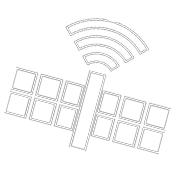- RADO's components
RADO has three main components: the Observation Network, Data Centre and Science Centre.
The Observation Network is based on 5 existing lidar stations, which now operate as the Romanian Lidar NETwork (ROLINET). Four of the five sites are equipped with elastic backscatter lidars, having a dynamic range from 500 m to 15 km and a spatial resolution of 7.5 m. A multiwavelength Raman lidar (3 elastic + 2 Nitrogen Raman + 1 water vapor channels) is used at the Magurele super site, along with a tropospheric ozone lidar. All stations operate AERONET sunphotometers and ground-level in situ instruments, such as particle counters, gas analysers and weather stations. The INOE super site can also provide aerosol chemical composition based on the C-ToF Aerosol Mass Spectrometer (unique in SE Europe) and aethalometer measurements.
RADO;s Data Center is represented by a dedicated server and storage facility, where atmospheric data are processed, analysed and correlated. Measurements provided by the Observation Network as well modelling tools are used to characterize greenhouse gases distribution and variability, aerosols and clouds coverage (nebulosity) and spatio-temporal variability.
RADO’s Science Centre is in charge with demonstration, education and outreach programs. Master and PhD students from the partnering organizations and from Universities in Romania have access to laboratories and databases, and benefit from hands-on training (Summer School Atmospheric Remote Sensing - 2012, Summer School Initial Training for Atmospheric Remote Sensing - 2013, etc). Its experts are involved in tutoring and mentoring (e.g. the PRACTICOR program and doctoral program of the University of Bucharest). Special demonstrations and fun physics lectures for high school students and children are organized each year (FP7 Researchers Night, Everybody. Beyound the sun, Science Week), as well as workshops, seminars, and round tables.
